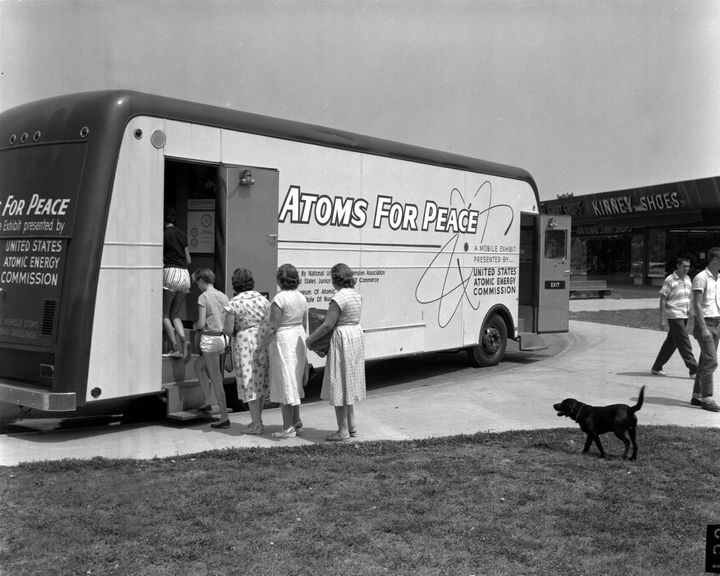
By Nancy Jo Nicholas
This summer marked the one-year anniversary of the conclusion of the Iran nuclear deal. Signed by representatives of the United States, Iran, France, the United Kingdom, Germany, China, Russia, and the European Union, the deal was designed to stop Iran’s efforts to make nuclear weapons—thus making Iran, its neighbors and the world a safer place.
During the last year, the deal has successfully rolled back Iran’s nuclear program. As President Obama noted in a statement on the anniversary of the agreement, “Iran has shipped out 98 percent of its enriched uranium [25,000 pounds], dismantled two thirds of its centrifuges, filled its plutonium production reactor with concrete, and adopted the most intrusive inspection and verification program ever negotiated for a nuclear program.”
In order to make sure Iran complied with their end of the deal, the U.S. and our allies needed verification that it was doing everything it had agreed to. To that end, inspectors from the International Atomic Energy Agency (IAEA) based in Vienna have been spending a lot of time in Iran, using radiation sensors and other instruments to make sure nuclear materials are not diverted for use in weapons. But how do the inspectors know what to look for? They come to Los Alamos National Laboratory to learn how.
Tucked in the foothills of the Jemez Mountains in northern New Mexico, Los Alamos developed the first atomic bomb during World War II. Since then, much of our work has focused on preventing proliferation: making sure nuclear materials don’t get into the wrong hands. Because we built the first atomic bomb and have been the go-to site for development of nuclear technologies ever since, we have a unique expertise when it comes to all things nuclear.
This is why, multiple times a year, inspectors from the IAEA make the long trek to our Laboratory to learn exactly how to identify potentially dangerous nuclear materials. It’s impossible to know whether a nation is developing the capacity to build nuclear weapons unless we know exactly what that looks like, what materials it requires, what processing must happen, etc. In other words, it takes a weapons lab to help find a weapons lab.
Los Alamos started teaching a special course for IAEA inspectors in 1980, and since then, all IAEA inspectors have been trained at the Laboratory. What they learn takes their initial training, which tells them how to take measurements and follow procedures, to the next level. By the time the IAEA inspectors come here, they’re experienced enough to know what questions to ask. We teach them the physics behind the measurements and where the techniques work well and where they don’t.
The 10-day course accommodates up to 16 inspectors, who are instructed all day in the “schoolhouse,” a laboratory equipped with the same instruments inspectors use in the field. The “students” work under the direction of the experts who developed these instruments. And they make measurements from a more comprehensive group of uranium and plutonium samples than they’ve previously encountered.
The course provides the students with as much one-on-one time with instructors as possible (one instructor for every two students), but the course also requires them to operate all the instruments themselves and make all their own measurements.
The intensity and breadth of classroom experience (seven to eight hours a day) prepares inspectors to solve problems in the field. Those problems might be as mundane as dealing with malfunctioning equipment or as esoteric as working under conditions that make the measurements harder or less reliable. Measurements can be affected by material composition—whether the material in an item is a pure element or includes traces of other elements such as fluorine, beryllium, or carbon. Even an oddly shaped container of material can cause problems.
For such situations, the students learn when to switch to a different, more robust measurement technique. Or they learn to shift themselves and their equipment to more advantageous positions because measurements can also be affected by background—the nearby presence of other materials producing or blocking radiation, which can be common in a plant’s complex environment.
Like any class, the course ends with a final exam: a day-long exercise in a mock-up of an inspection facility with containers full of unidentified items, which the inspectors must then identify. The exam is designed to be tougher than anything they’ll encounter on the job—with good reason. We want to make sure these inspectors can handle any question they face in the field—and have the confidence that they’ll get the right answer.
In addition to training, Los Alamos researchers work to develop new instruments to support inspections, such as an online enrichment monitor, or OLEM. An enrichment monitor was installed by the IAEA at the Natanz Fuel Enrichment Plant in Iran to measure the amount of uranium-235 as a percentage of the total uranium flowing through the gas centrifuge facility, continuously monitoring the uranium enrichment level—making sure it’s not weapons grade. It enables around-the-clock monitoring of the facility, so it’s collecting data even when inspectors are not on-site taking samples.
Being part of an international community in a nuclear age means that we must find ways to keep the materials secure and out of the hands of would-be proliferators, while not hindering peaceful uses that are critical for energy, medical, and other important needs. Safeguards do just that.
Nancy Jo Nicholas is the Associate Director for Threat Identification and Response at Los Alamos National Laboratory.
